Bobbing tails, a diet of insects, and their namesake songs — with phoebe birds, there's lots to love! Here's how to identify them.

Get Familiar With the Friendly Phoebe Bird Family

On This Page
Three Phoebe Bird Species to Know
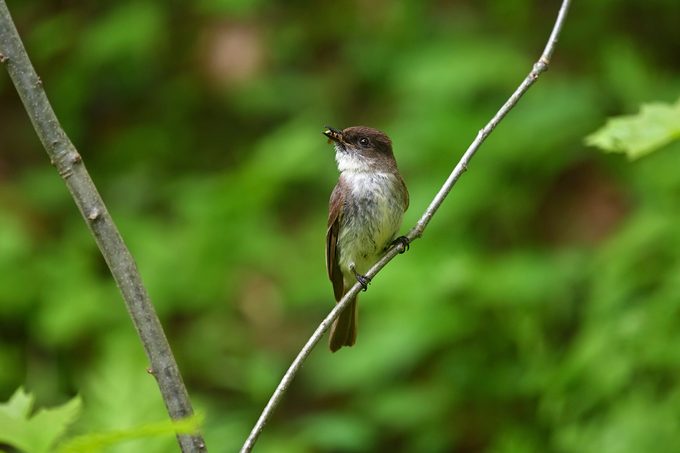
Along a woodland stream, a slim gray-and-white bird perches upright on a twig, dipping and raising its tail in a gentle motion. Every few moments, it gives a throaty whistle: Fee-beee! It’s announcing its name because this is an eastern phoebe, one of the three species of phoebe bird in North America.
Phoebes belong to the flycatcher family, sharing the habit of darting out from a perch and nabbing small flying insects in midair. All three species have simple color patterns, and males and females look the same.
Unlike most flycatchers, phoebes usually made their nests on rocky ledges or stream banks, and not in shrubs or trees. Now, phoebes often build nests under bridges, in barns or on porches, becoming familiar neighbors for many people.
Eastern Phoebe: The Original Phoebe Bird

When the famed bird painter John James Audubon came to America as a teenager in 1803, the eastern phoebe was one of the first birds to capture his attention. He spent days watching a pair with a nest inside a shallow cave along a creek in Pennsylvania. But he also noted other pairs nesting under bridges and inside sheds.
Today, most eastern phoebes choose such human-made structures. The female builds an open nest with a foundation of mud, topped with moss, grass and leaves. She lays two to six eggs and incubates them for about 16 days. After they hatch, both parents help to feed the young.
Although most members of the flycatcher family migrate to the tropics in the fall, many eastern phoebes spend the winter around streams and ponds in the southeastern states, with others moving south into Mexico. These hardy birds also migrate north earlier in spring than other flycatchers, reaching the Great Lakes by March. In cold weather, when insects are hard to find, they survive by eating small fruits and berries.
In addition to the fee-beee, sung mostly in spring and summer, these birds have a sharp chip note used at all seasons. Males also have a flight song—like a rapid series of chips and buzzes—that is not often heard.
Black Phoebe: Along Western Waters
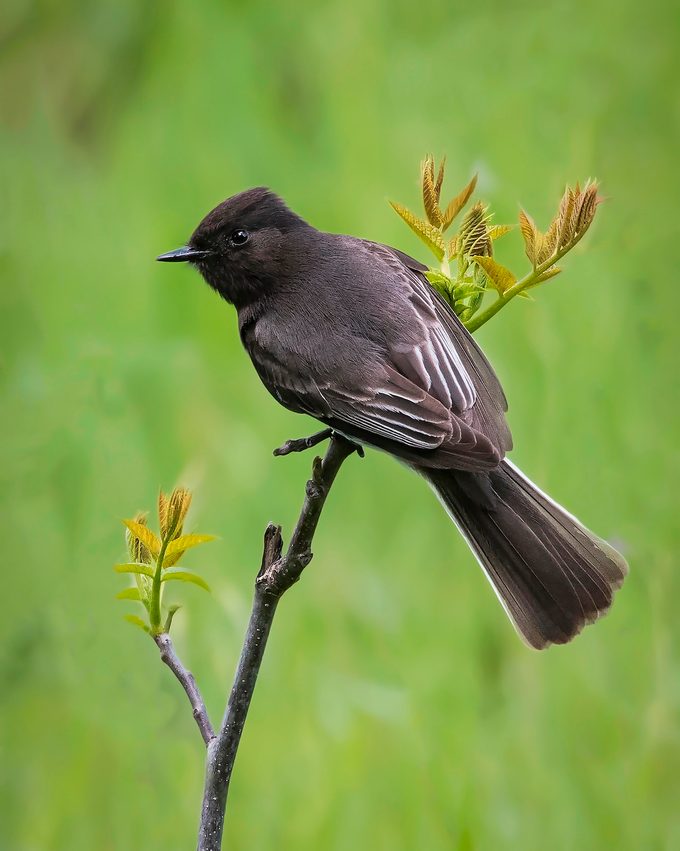
If eastern phoebes like the water, black phoebes love it. In their range in the Southwest, from Texas to California, they are almost never found away from the water’s edge: rivers, ponds, cattle troughs and coastal rocks just above the ocean surf. Farther south—in Mexico, Central America and South America—black phoebes live along mountain streams.
Black phoebes have the same slim shape and upright posture as eastern phoebes, and they bob their tail the same way, but they are more sharply patterned: mostly charcoal black, with a contrasting white belly.
They have their own version of a fee-beee song, but it is much higher and sharper, and repeated more rapidly.
Their nests are similar to those of eastern phoebes in location and material, often placed under bridges, and based on a foundation of mud.
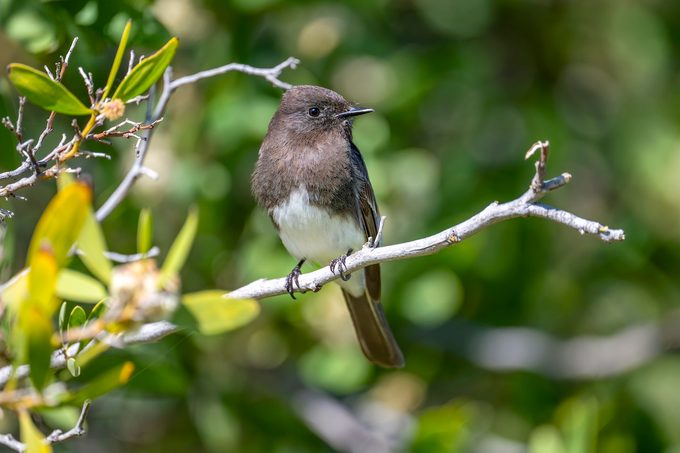
From low streamside perches, black phoebes fly out to snatch insects from the air. They also swoop down to pick them up from the surface of the water. But not just insects: Surprisingly, these small songbirds have been observed grabbing tiny fish. They may even carry these little fish back to feed them to their nestlings.
Say’s Phoebe: The Dry-Country Cousin
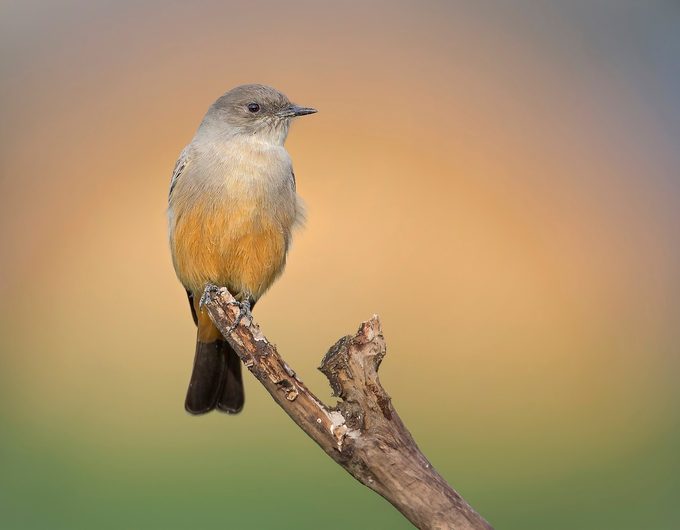
Say’s phoebe is slightly more colorful than its relatives. Brownish gray on its back and pale salmon-orange on its belly, it wears earth tones that seem fitting for its usual surroundings.
Unlike the other two phoebes, Say’s is a bird of dry open prairies, often found far from water. In fact, it may not drink even when water is available, getting all the moisture it needs from the insects that it eats. It has a softer voice than the other two, a gentle peeyur.
This phoebe was named for naturalist Thomas Say, who first observed it on the Stephen Long expedition to Colorado in 1820.
It’s widespread in the West, with a summer range stretching from central Mexico north through the western states and western Canada to northern Alaska. In fall it withdraws from much of that range, spending the winter in the southwestern states and Mexico. It favors wide-open habitats, including farms, deserts and grasslands, plus tundra above tree line in the mountains.
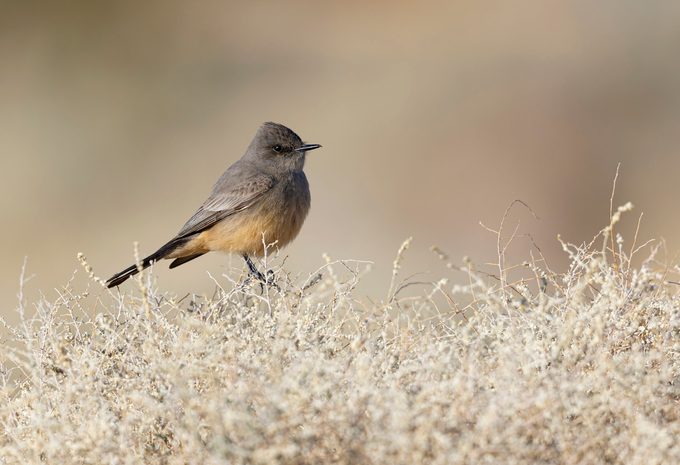
Nest sites chosen by Say’s phoebe are like those of its relatives: flat surfaces of cliffs or caves, or ledges under bridges, inside barns and under porch eaves. Unlike the other two, however, Say’s phoebe seldom uses mud in its nest, simply building a cup of grass, weeds and other materials that it can find in dry surroundings.
Phoebe Bird Habitat
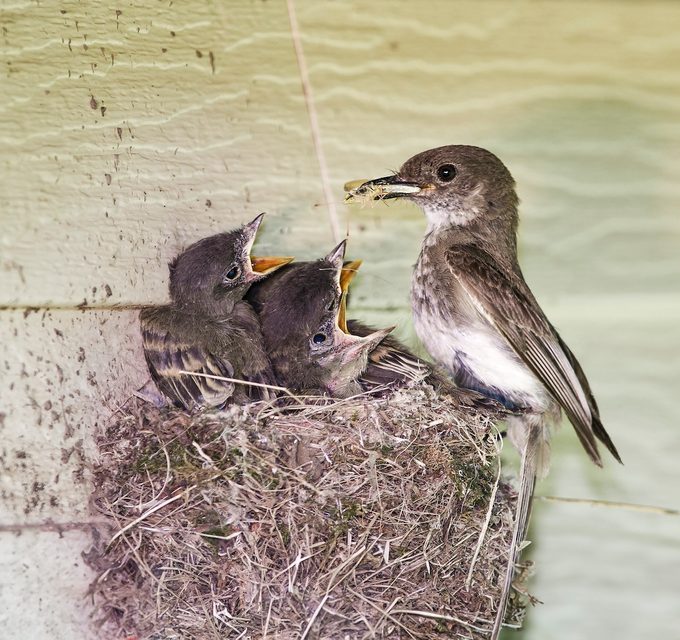
No matter where you live in North America, at least one of these three phoebes probably lives nearby, and it’s worthwhile to get to know these friendly flycatchers.
Eastern phoebe: In spring or summer, look near structures where they might place their nests, such as small bridges, open sheds, barns or picnic shelters.
Black phoebe: Look along the edges of ponds, rivers or other bodies of water, and listen for their sharp, piercing calls.
Say’s phoebe: Can be anywhere in open country, but look along fences or around ranch buildings.
RELATED:





















